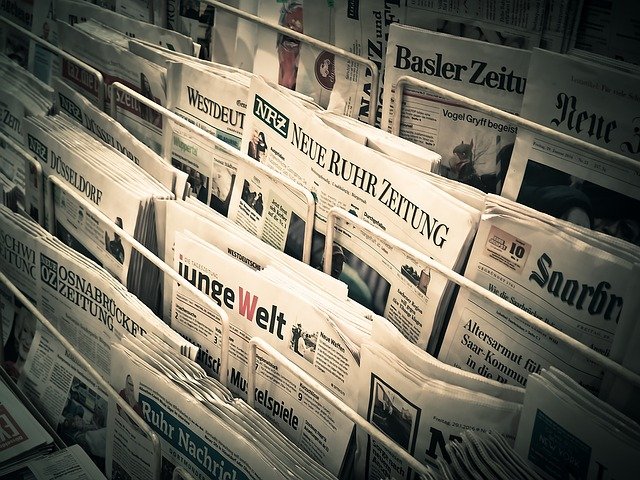Journalistic editorial: what is it, characteristics, structure, types and keys to write it
Contents
What is a journalistic editorial?
It is a journalistic text that constitutes one of the largest sections of text types, characterized for being a type of non-literary text in which an informative content is exposed. Particularly the editorial or also known as journalistic editorial, is a type of expository and argumentative text in which an assessment is provided in front of a relevant news event.

In other words, the journalistic editorial expresses a judgment or opinion on a news item, which may include experiences. It is mainly characterized by the fact that it is not a signed text or one that identifies a specific author, but a collective opinion, often corresponding to a group of editors.
Main characteristics of the journalistic editorial
Let us now review some of the most important aspects of this type of non-literary texts that allow us to distinguish them from the others and identify each of their most important components:
Function of the editorial
One of the fundamental features we should start with is related to the function of the text. In fact, the journalistic editorial can fulfill several functions simultaneously. On the one hand, it can engage in the explanation of a series of facts, as well as presenting their importance, and on the other hand, it can be in charge of offering a contextualization of historical character if it wants to present antecedents, it can also anticipate aspects of the future, establish value or moral judgments, call to action, among others.
Relevant topics
Another characteristic of this type of text is that although it focuses on a wide variety of topics, it generally prioritizes those that are most relevant in the country in which it takes place, where current issues related to politics predominate. As this aspect is the most relevant in the news, it is usually one of the most recurrent topics in the editorials.
Another of the most important topics is usually the economy, an aspect also of vital importance within society and that can be handled in different spaces, whether at a local, national or international level. Subsequently, there are other sectors such as the social, cultural and sports fields, etc.
Location in the media
This type of text is usually found in media such as newspapers, although it is possible to find it in other formats such as magazines. The journalistic editorial is included in the opinion section of the media.
Authorship of the journalistic editorial
One of the most important aspects of the journalistic editorial has to do precisely with the authorship of the writing of this type of text, since there is no specific author who is properly identified. Thus, it is a text that represents a collective opinion, so that it is also written, evaluated and constructed by a group of people, in most cases. However, it is possible that it may be written by a single person.
Editorial team
The group of editors may vary according to the medium or context, although it is possible to distinguish between two well-recognized modalities. On the one hand, there is the North American model, which distinguishes itself by dividing it into the news department and the editorial department, where the latter has its own director and a staff of editors in most cases.
There is also the European model, which tends to work in Latin American media, where the two departments are subject to the same editorial director, considered as the opinion leader. All members are mutually supportive and the departments are not divided. The editorial team, composed of editors, is responsible for organizing the work and writing the editorial.
Publication of the editorial
This type of text is usually published on a daily basis, since it is the product of the work of the editorial group, which may be made up of different numbers of people. In cases such as small media, the director is the person in charge of writing the journalistic editorial and it is published less frequently.

Structure of the editorial
The writing of this type of text depends on the style used in the media in which it will be published, as well as other interests and characteristics of the journalist. However, it is possible to identify an outline that is usually present in the writing of the editorial and that is key to its development. This structure is composed of the following elements:
Title
In this section, a title should be generated that captures the public’s attention, so that it invites and interests the audience to read it. For this purpose, it is recommended to use precise words that allow the creation of a short and attractive title. Many authors, in this case, resort to the formulation of questions that introduce or occupy all the space in the title.
Introduction
After the title, it is necessary to complement the introduction and contextualization to the reader, so it is required an initial writing that in a short paragraph is able to present to the public what is the topic that will be developed in the following spaces. It is suggested that this text does not exceed 5 lines and that it is composed of precise and short sentences that offer the information in a clear and concise manner.
Body of the editorial
This section of the editorial contains all the argumentation in which the author or authors present the data and other informative aspects that support the opinions, evaluations and ideas established with respect to a specific topic. This is an extremely important space, since it is the axis on which the whole basis of the argumentation rests, since here the public is offered the option of supporting or rejecting what is presented on the basis of concrete elements.
Conclusion
The editorial ends with a conclusion that should not exceed one paragraph in length. Here it is necessary to establish all the most relevant points on the subject that was exposed in depth in the editorial body. In addition to this, the logical reasoning through which the opinion of the medium is reached must be presented. The latter provides readers with a much more concrete and precise view of the topic presented.
Types of journalistic editorial
We can identify several modalities of this type of text according to its main function and the way in which it is presented. Thus, we can find the following types:
Explanatory editorial
As its name indicates, it is an editorial that is written with the purpose of offering specific information, which is progressively developed as an explanation. In this case, the explanatory editorial is concerned with clarifying, stating and describing an aspect without resorting to an opinion directly in its presentation.
Opinion or thesis editorial
It refers to those journalistic editorials in which the author or group of authors and/or editors express in a direct and evident way their opinion in relation to a certain aspect. This opinion may focus on what is valid or on a deep and unfavorable criticism.
Interpretative editorial
It is a type of editorial in which the author or authors write a text in which aspects such as causes and effects, the future of a specific element, conjectures, among other processes of interpretation are included in relation to them.
Informative editorial
This type of editorial, as mentioned, is a text whose purpose is to present a specific event or aspect to the public, in such a way that it seeks to bring it to the attention of other people.
Argumentative editorial
This is a type of editorial in which a text is presented in rhetorical form with arguments and counter-arguments in which the author exposes a situation or aspect. One of the main features of this type of editorial is related to the intention of persuasion and influence that the content may have on the reader.
Action editorial
It is a journalistic editorial that is characterized by putting into action the totality of all the springs by means of which it is possible to influence the will of the actor with a specific aspect, similar to the argumentative editorial.

Keys to writing a journalistic editorial
We end this section with a series of elements that should be considered when writing a text such as this one, which, as we have seen, has a series of key aspects that distinguish it from other sections and formats in the journalistic field. These key elements are:
Selection of the topic
One of the main keys of these journalistic texts is the relevance of the topic. In general, a current topic should be chosen that is capable of capturing the readers’ attention because it is of interest to them. To this extent, it will be possible to write a text that also invites them to reflect and question through the exposition of arguments presented by the authors in favor or against the topic. Although there are several possible fields of writing, politics, economics and society are usually the strongest.
Clear opinion
The writing of a text like this implies that the author or journalist has a clear opinion, that is, a definite position in favor or against the topic being presented. This position will be supported by the arguments presented and the information provided in a precise and clear way to the audience. In this way, a much clearer position is formulated before the reader.
Reliable data and information
One of the aspects, which at the same time becomes a fundamental requirement of the journalistic editorial, is the use of real and reliable information, since it will be very important in the exposition of arguments within the body of the editorial. It is very important for the journalist to look for reliable information, from recognized sources and authorities if possible, which will provide him with the information he needs for the presentation of his assessments.
This is because, in addition to this, the data provided will be vital for the contextualization of the topic to be developed, through which he starts with the exposition of arguments that must be supported and, at the same time, seek to convince.
Setting up a structure
As we have seen, the journalistic editorial has a generic outline in which the information is presented; however, it is also possible that the author suggests new elements to this structure, either by initiative or by the style of the media in which it is going to be published.
For this reason, it is recommended that before starting to write, a kind of initial structure be formulated that will allow the order and form of each of the sections to be addressed and that will allow the exposition of ideas in a clear manner, also following the complementary information on which the ideas will be based.
Precise and clear wording
This type of text usually has a considerably reduced development space, so that in its components the author must be very precise with the information presented. This requires a writing with concrete and precise terms that allow him to express his opinion in a clear way, which makes it easier to adapt to the space and communicate what is wanted from the first moment.
Ease of understanding
The audience or public to whom a text such as this can be addressed can be very broad and varied, which is why a clear wording that allows the reader to understand in a simple way what the author or authors want to say is suggested. An element that strengthens the ease of understanding is the precision of the words and sentences. It is recommended to write in a way that is easy to understand.
Final proofreading
Once the text is finished, it is necessary to carry out a first revision that will allow us to identify possible shortcomings in the writing and spelling of the text. In this same process we can review any obstacle in the reading, comprehension and interpretation of the information presented and make the necessary modifications to facilitate the process.
It is suggested that the text be reviewed by a trusted person, if possible, to verify the reading of the information presented and the knowledge of external assessments that can nourish the text.
Now that we know how to write a journalistic editorial, one of the most important texts in this field, we will be able to do it with greater confidence. Remember that we also have a section dedicated to journalistic and non-literary texts where we tell you everything you need to know about each of them.
